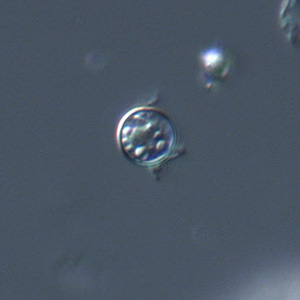The Texas Department of State Health Services is encouraging healthcare providers to test patients for the parasite Cyclospora if they have diarrheal illness lasting more than a few days or diarrhea accompanied by severe anorexia or fatigue.

Image/CDC DPDx
Within the past month, 68 cases of Cyclospora infection have been reported to the Texas Department of State Health Services. Public health is investigating the increased number of cases to identify possible common exposures. Rapid reporting to public health, enabling prompt investigation to identify possible common exposures, is essential to preventing additional cases of cyclosporiasis this year.
Symptoms of cyclosporiasis usually begin 2 to 14 days after ingestion of Cyclospora oocysts in contaminated food or water. Profuse diarrhea can last weeks to months and may relapse. Additional symptoms may include anorexia, fatigue, weight loss, abdominal cramps, bloating, increased gas, nausea, vomiting, and low-grade fever.
Related: Hotez measles prediction: ‘Something awful is happening in Texas’
Although no common exposure source has yet been identified for the increase in cases this year, past outbreaks in the U.S. have been associated with consumption of imported fresh produce, including fresh cilantro, pre-packaged salad mix, raspberries, basil, snow peas, and mesclun lettuce. Thorough washing of fresh produce is recommended, but may not eliminate the risk of transmission since Cyclospora can be difficult to wash off all types of produce. Infection is generally not transmitted directly from person-to-person.
Related:



